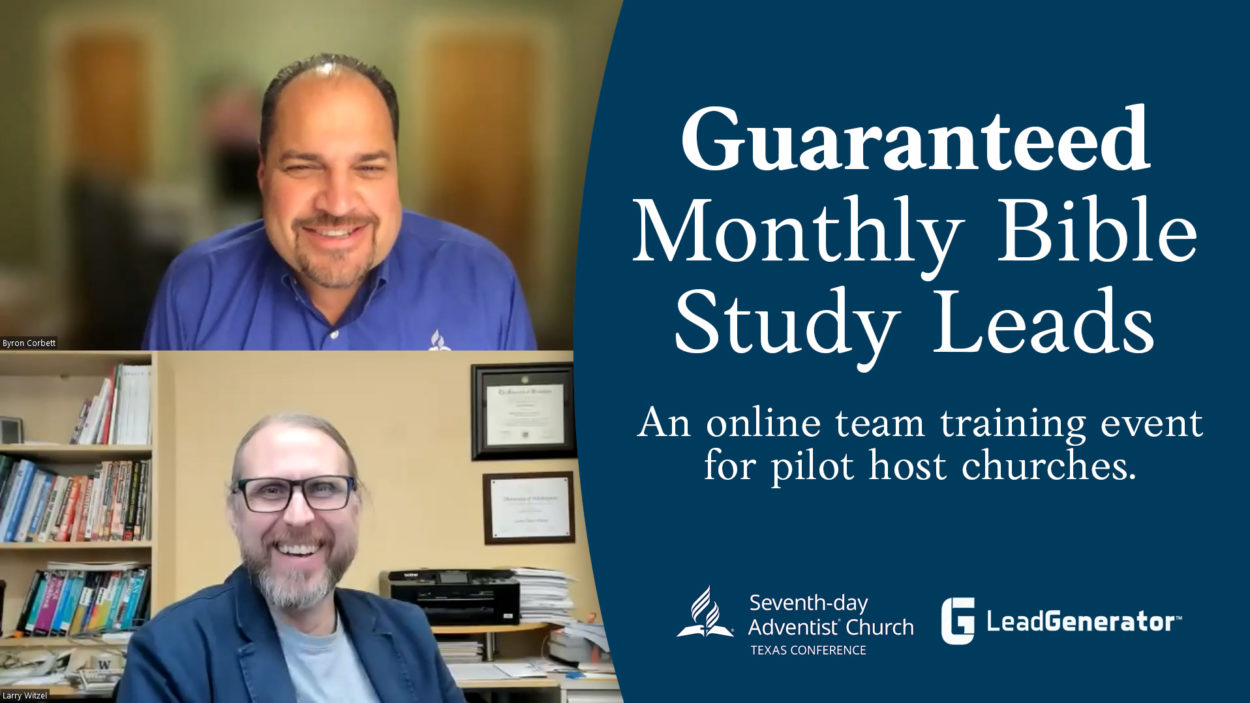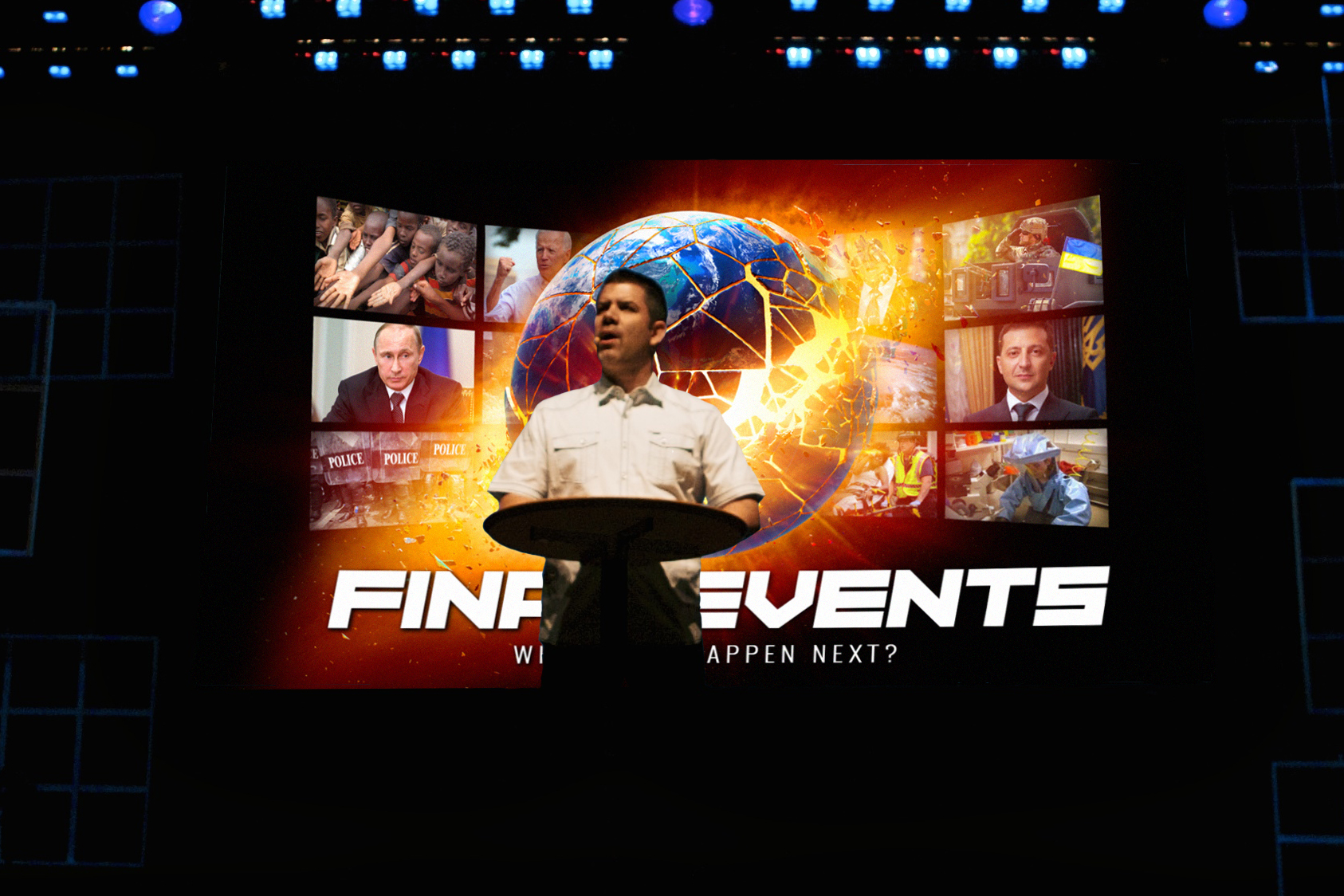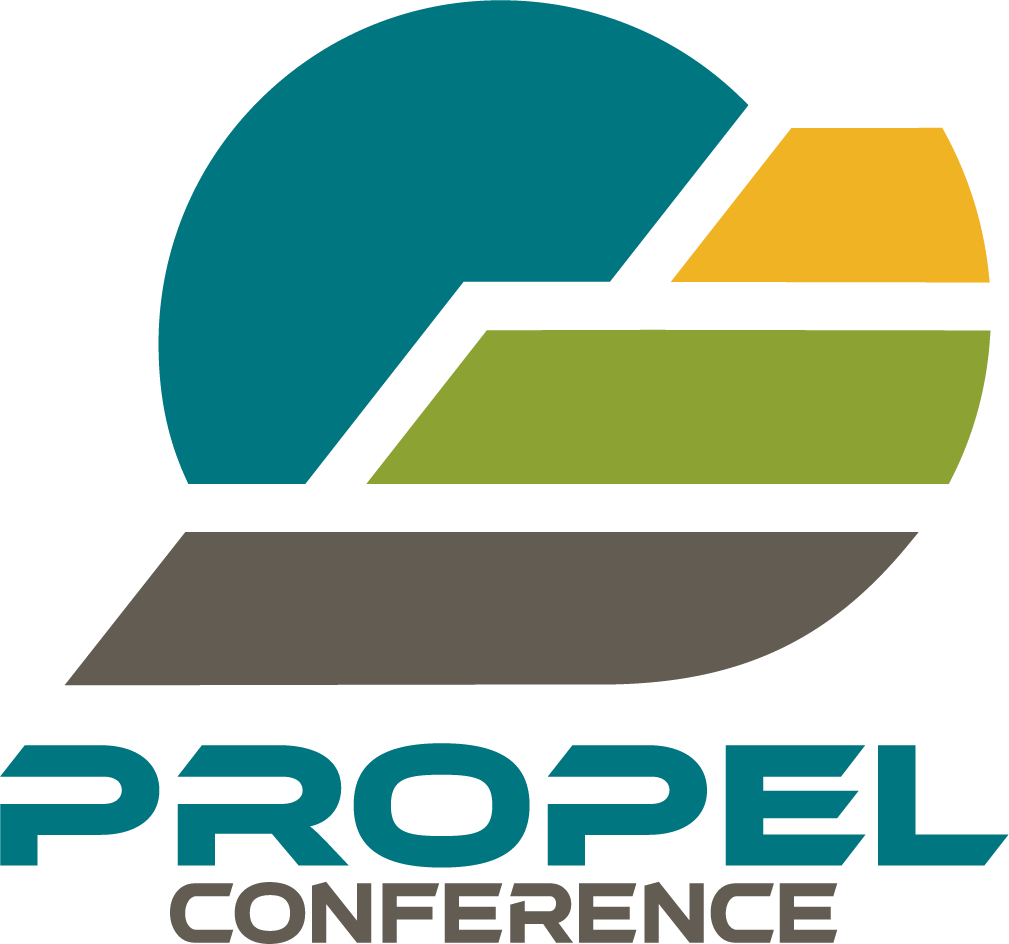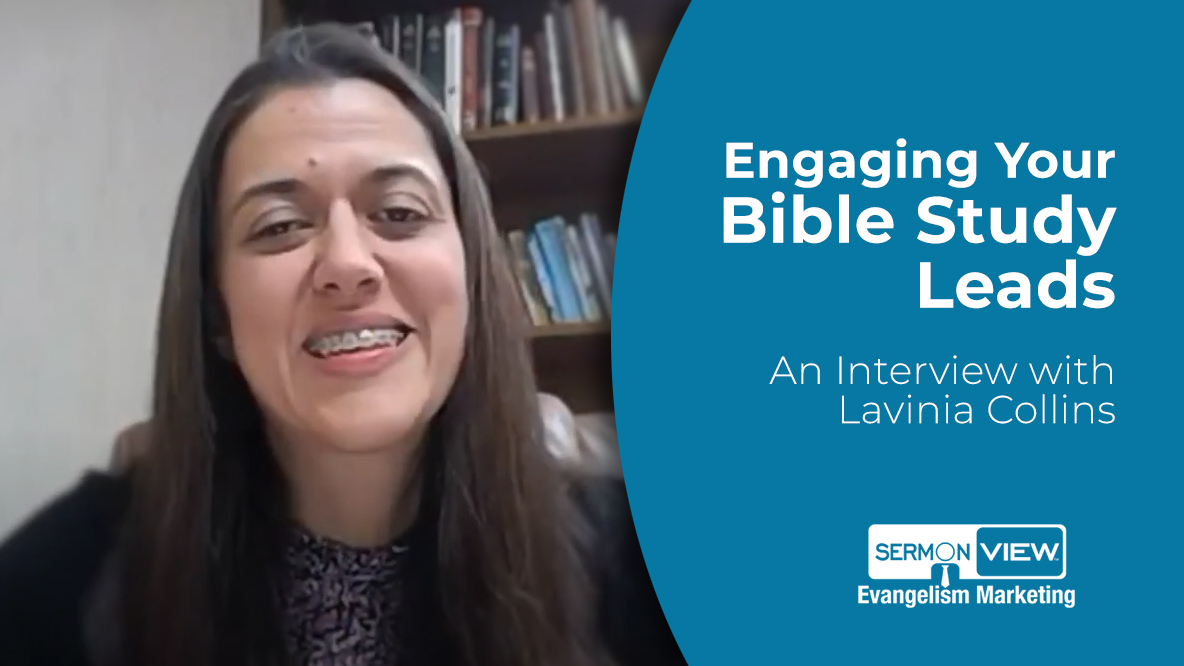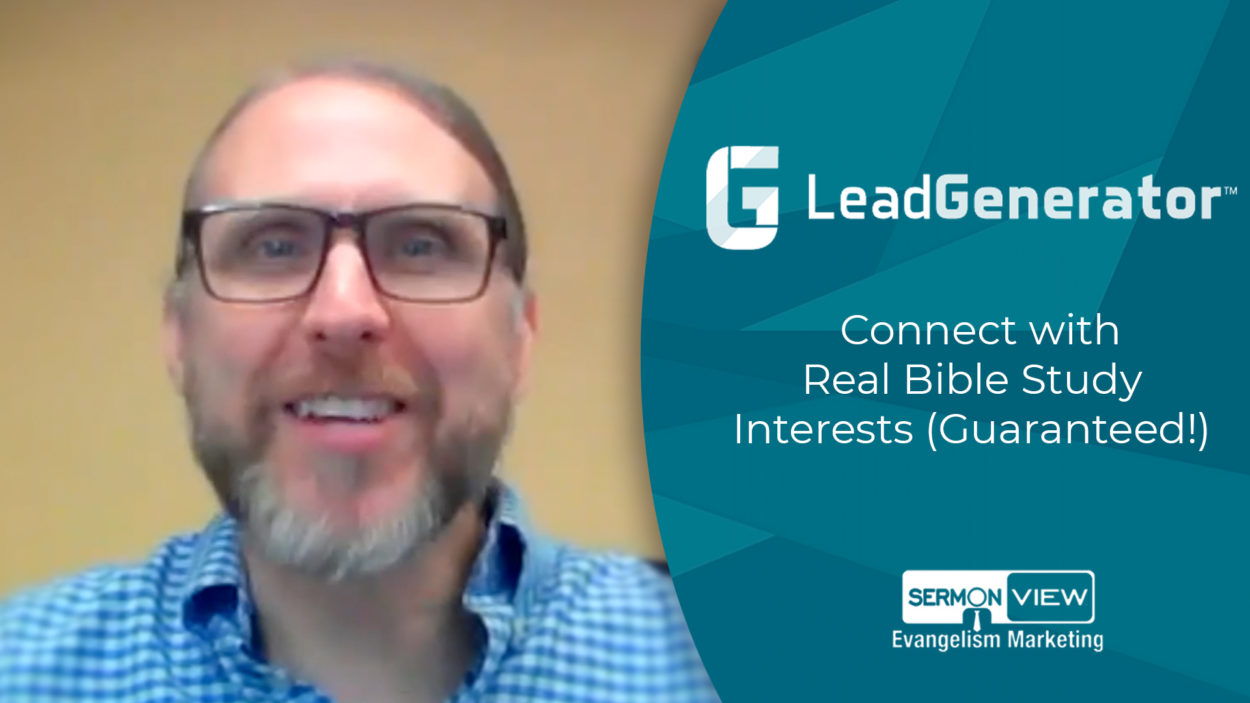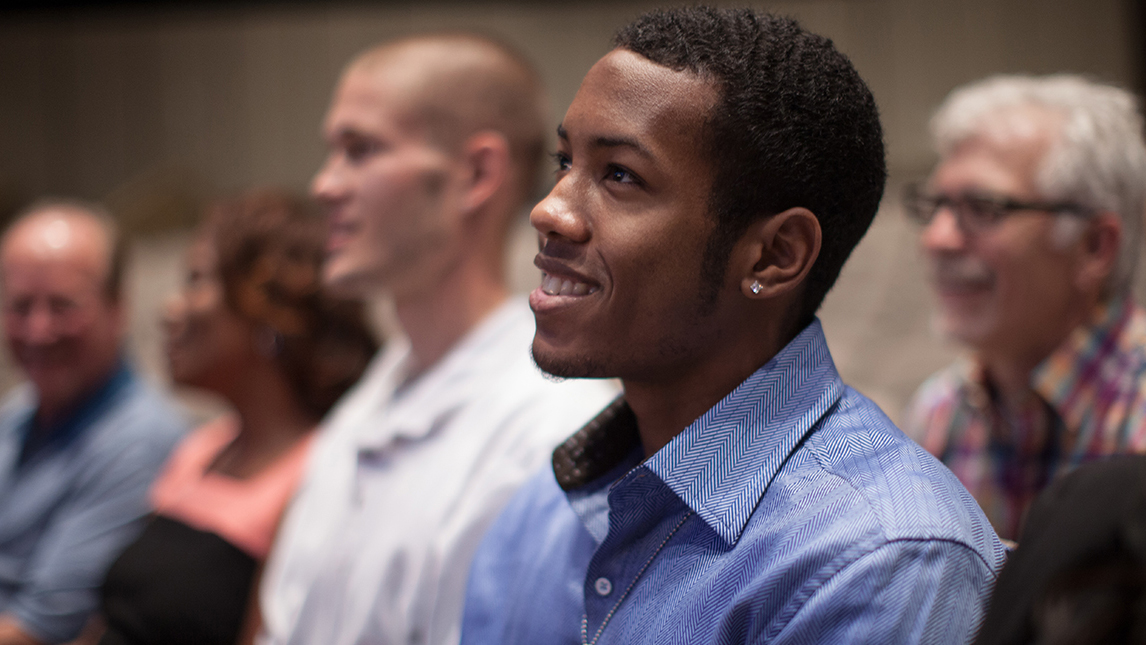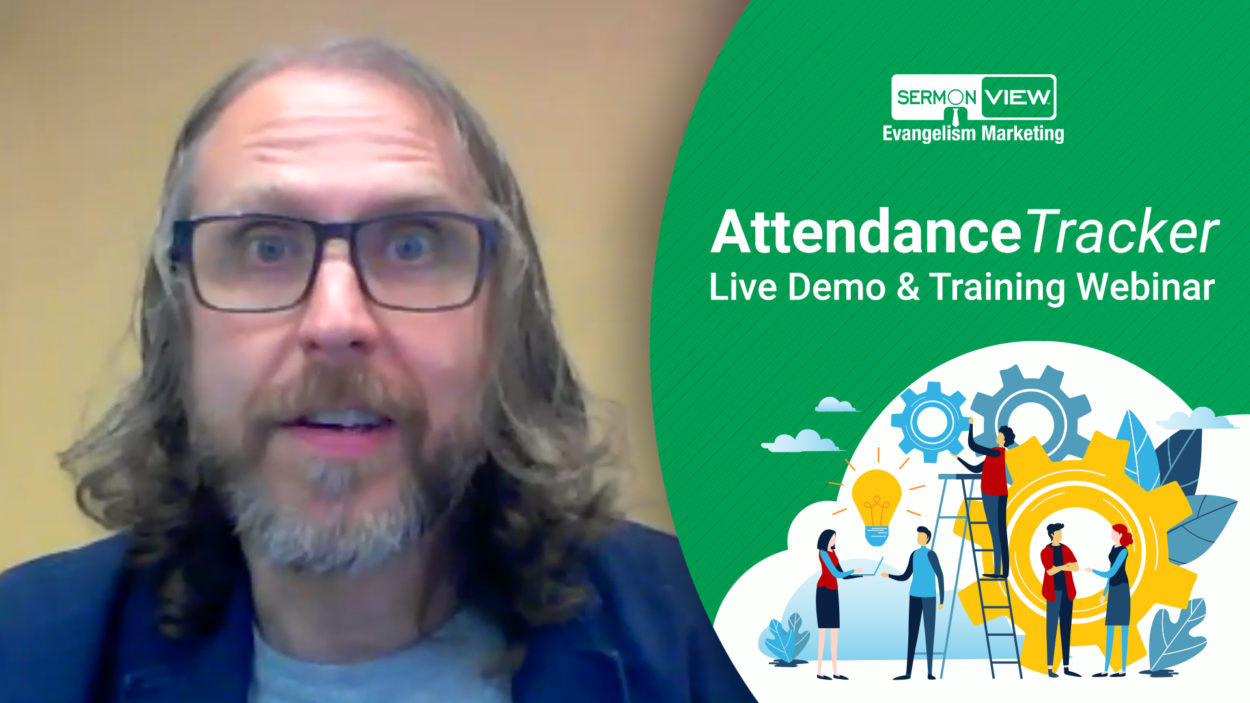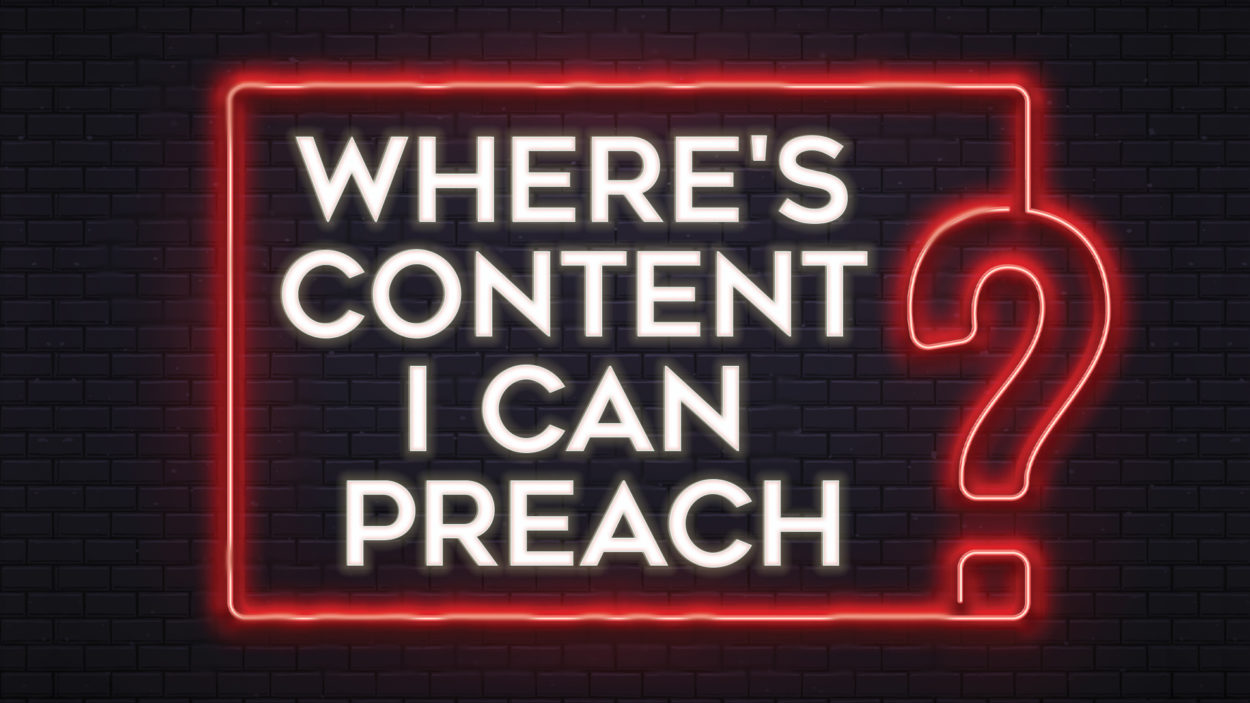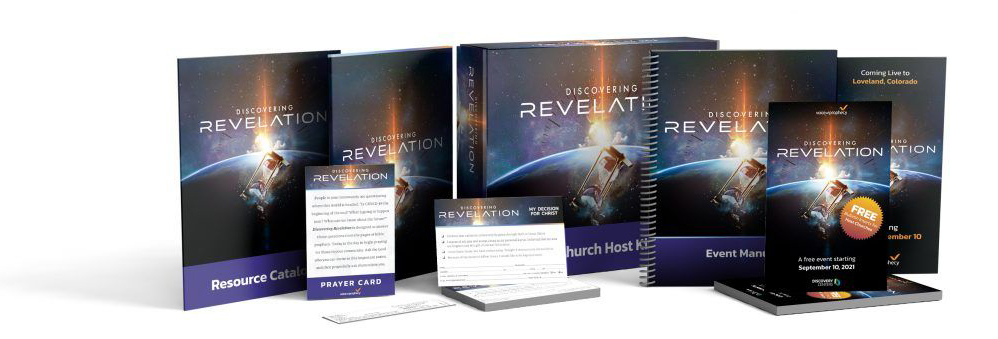This training material is part of the Texas Conference’s innovative evangelistic efforts in 2023.
The Promise Prophecies is a yearlong evangelistic cycle that starts off with a Bible study lead generation campaign that starts a few months before the public evangelistic series. As part of this cohort, you will get 12 months of a LeadGenerator social media ad campaign to get new leads in your community. LeadGenerator is designed to meet people right where they are in their spiritual journey, and connect them with your church.
In this webinar, Texas English Evangelist Byron Corbett, SermonView founder and president Larry Witzel, and SermonView Campaign Manager Sarah Grant walk through this unique program and how it will benefit your church. You’ll see firsthand how LeadGenerator gets you Monthly Bible study requests and you’ll also walk away with a better understanding of how the InterestTracker software works with this program, so your team can keep track of offer requests and engage with your leads.
Here are excerpts from this conversation:
Byron: I’m here with the founder and president of SermonView, and Larry and I go back a long, long way. We kind of knew of each other before we knew each other. I won’t get into that story. We did early teen ministry at the Washington conference camp, meeting together for a number of years, had a great time, and I’m just excited that Larry is in this evangelism marketing space and that we have the opportunity to work together. So, Larry, just talk to everybody here from your heart and from your passion and how you see SermonView being a part of this.
Larry: Yeah, well, yeah. Thank you, Byron. SermonevangelisticView is a ministry that’s dedicated to helping introduce people from your community to your church. So we do that in a number of different ways. When you do an evangelistic event, for example, whether it’s a reaping series, a full message prophecy series, or if you’re doing a parenting seminar or an archeology seminar, if you’re doing an event, we can do marketing using direct maile, w use online advertising, and we can use outdoor banners and road signs to let people in your community know about the event. And then we have a registration platform for people to be able to sign up, reserve seats, and then we also have attendance tracking software to help you through the process of that event. So event marketing is a big piece of what we do when a church is doing an evangelistic event, we can help introduce people to you.
Larry: The other major thing that we do is what we call Bible study lead generation. So we have found that we can go into almost any community in North America and find people in that community that are interested in studying the Bible with you. We have a program called Lead Generator, which is a year long program that we use online advertising methods to invite people to request Bible studies. We then pass those names on to you. You make the introduction and you reach out. You say that you’re the person that’s been asked to make contact and provide the Bible study information, and then you’re off to the races. From there, you’re handling the Bible study as if it was any other Bible study.
Larry: Those are the two main things that we do. Lately, we’ve been getting into church websites as well, but that’s less relevant to what we’re talking about today. I’ll tell you, my passion is the local church. I believe that the local church is the heartbeat of ministry for the Seventh-day Adventist Church. And everything that we do at SermonView is focused on the local church. And when we partner with an organization like the Texas Conference, we’re doing this in order to support the local churches that are participating in the program. We’re focused on you. We’re not focused on the conference. (Obviously, the conference has its needs, and we want to meet those needs as well. But ultimately, we’re working together to support you in your ministry and your outreach in your local community.)
Larry: I am an entrepreneur and I have a degree, an MBA from one of the top entrepreneurship schools on the West Coast. Actually just got Entrepreneurship magazine today. I saw that it was listed as the number one entrepreneurship school on the West Coast, University of Washington. And I’ve done a number of startups. I was involved in tech marketing for several years after I got my MBA. Innovation is really my passion and over 20 years ago, God brought me into this space where I’m helping churches with their evangelism. And this is a confluence of things that I’m interested in. I want to help churches be more effective. And I love Innovation. And when you marry those two things together, innovation is not about innovation in and of itself. I find it fun, but ultimately it’s not about the innovation, it’s about improving effectiveness. You want to innovate in order to improve effectiveness. I just read an article today that talked about creativity and ideas and where those come from and how to have great ideas.
Larry: Basically, the bottom line of this article was you need to try a lot of things and iterate rapidly. And when something’s not working, stop and do something else. This article is saying the best way to write great symphonies is to write a lot of symphonies. The best way to write a great article is to write a lot of articles. And so at SermonView, we’re committed to the innovation process and we try lots and lots and lots of different things. I’ve made almost every mistake that you can imagine when it comes to evangelism and when it comes to marketing, especially when it comes to evangelism marketing. But that’s not failure, that’s learning.
Larry: When we’re going through this innovation process, this entrepreneurial journey together on this project with the Texas Conference, with you guys, as local church leaders understand that our goal is improving the effectiveness of evangelism. We want to reach more people. We want to make more and better disciples of Jesus through what you guys are doing. It’s no secret that the effectiveness of traditional Adventist evangelistic methods have been declining as cultural shifts have taken place, as changes in society have happened. Our methodologies are not as effective as they once were. But what’s really important to understand is just because they’re not as effective doesn’t mean that they are not the most effective method possible.
Larry: But the only way to know that is to try lots and lots of different things. Over the last decade and a half, SermonView has handled over 6000 marketing campaigns on behalf of churches. And we’ve done some really creative stuff that didn’t work. We’ve done some really creative stuff that worked okay. And through all of this, we’ve really dialed in our ability to help you be as effective as possible.
Larry: So in this project with the Texas Conference, there are two specific points of innovation that we’re going to be looking at. And you guys, as our pilot churches are going to be crucial in helping us to test some of these things. And as we learn, then we’ll be able to deploy them to more churches and scale this program more widely in the Texas Conference and beyond, outside of Texas as well. There’s two specific points of innovation. And when I say points of innovation, these are questions that we have. And we’re going to try some things and see how they work. We’re going to define clearly what success looks like, what we call the success metrics, and we’re going to measure those. And if something works, we’re going to keep it. And if it doesn’t work, we’re not going to keep it.
Larry: The two points of innovation, the two things that we’ve seen as issues:
The first is when it comes to online evangelism, the difficulty has been translating an online engagement into a face-to-face relationship. Church is a social experience, and there’s a vertical component to it between you and God. And there’s theology and there’s biblical belief, and that’s important. But church is fundamentally a social experience. If you just have that vertical component that’s called discipleship, that’s you and God, that’s a personal retreat. Jesus said, where two or three are gathered together, there I am with you. And when two or three are gathered, that’s when you have church. And when two or three are gathered, you have a social component to that. So there’s this horizontal social component to church. And evangelism needs to account for this. It’s not just spreading Bible truth. It’s not just helping people understand the biblical perspective on different topics, like the end of the earth, the state of death, the Sabbath, or health. It’s not just about helping people understand this mentally or even emotionally. Until your evangelistic process accounts for how to integrate those people into the social dynamics of a local church, you’re not done. And what we found through the COVID experience, we did a lot of experimentation with online evangelism, and some of it was quite effective. But we still had a difficulty in connecting people into a local church, because from my perspective, until someone is actively engaged in the life of a local church, our job in terms of evangelism is not done. It’s not just teaching people Bible truth. So it’s not just doing online Bible studies and then saying, “Great, God bless you.” We need to find a way to bridge the gap from that online experience into a local church. We want to move from an online interaction to a face-to-face engagement in a local Seventh-day Adventist church.
Larry: So one of the things that we’re going to be looking at, we’re going to be experimenting with some methods. We’re going to be equipping you with some tools and a framework, a mindset for when you’re interacting with someone in this online space, what can you do to help move that relationship forward into an in-person interaction.
Larry: So that’s the first thing. The second point of innovation that we’re looking at, some of you may have participated in some of the bridge events that The Voice Prophecy has done over the years. Shadow Empire, A Pale Horse Rides, Final Empire, The Appearing. These are projects that we worked with them on, and the delivery methodology of a video, about half an hour (30 to 40 minutes video) followed by a guided discussion was a really effective way of building relationships. So you offer something of value, high production value, with this video. You invite people to come see it, and then you have this guided discussion where you’re actually building relationship through this conversation. And then afterwards, you’re having conversations with your guests. This methodology, this delivery modality, has never been used in a full-message evangelistic series. So Byron is working on developing content and there are going to be three aspects to the delivery of the evangelistic message: the first is going to be a video that Byron is going to be putting together, but it’s going to be followed by a guided discussion that someone in your local church will be leading.
Larry: So the professionalism, the production value of these videos adds credibility to Byron, but he’s going to be transferring that credibility over to somebody in the local church. Because you don’t want people to be building a relationship with Byron, they need to be building a relationship with you. So this guided discussion has been proven as a method to transfer that credibility into that local church. And so we’re going to be trying this out in a full-message series to see how that works. And then the third thing is that we’re going to be putting together a podcast on each topic that people can then connect with after they leave the experience of the church environment. So they got the video, they got the guided discussion, where there’s the social support that people are talking together about, answering questions and filling in their study guides, and then the ability for people to be able to then follow up and listen to a podcast on that same topic that Byron and I will be putting together.
Larry: So those are the two points of innovation. How to bridge the gap between online engagement and an in-person face-to-face encounter, and then trying out these, these delivery methods with the video, the guided discussion, and the podcast for sharing the Bible truth through these methods. So those are the two main points of innovation that we’re going to be working on. All right, I think I’ve used up enough time. Did I say everything that I needed to Byron? Did I hit the key points?
Byron: Yeah, I think you did a great job, Larry. I know there’ll be questions at the end and we can probably on things that we might not have got, but I think that’s a great overview. Thank you so much.
Larry: Great. So I want to pass this over to Sarah and she’s going to be telling you more about this LeadGenerator program and the way that it interacts with the interest tracker software. And she’s going to go into some detail about how that’s all going to work. Every one of your churches is a pilot church in this program. The Texas Conference is paying for Lead Generator for a year for you to be able to use this. They’re also paying for some add-on modules for InterestTracker. Sarah is going to be telling you more details about this. But I wanted to give you that background that the Texas Conference is giving this to you because you’re participating in this pilot program. So Sarah, take it away.
Sarah: Yeah. Thank you, Larry. So what is LeadGenerator? Larry kind of touched on it a little bit, but what it is is it’s an online advertising campaign that introduces you to people in your community who are expressing an interest in learning more about God, the Bible, or both. So the campaign is run on an annual basis and it guarantees a set number of Bible study requests every month through these online ads. So what happens is somebody is going to be on their social media platform. (These are primarily going to be run on Facebook and Instagram. Some of the larger campaigns are going to be run on Google as well. But we see the majority of the leads coming in from Facebook and Instagram, so that’s where a lot of them are going to come from.) When somebody is online and they see an ad pop up and click on it, they are then going to click through about four pages to confirm their request before that ever gets submitted to you. As you get them and you have these interactions, you can know that these are not submitted by accident. Somebody had to hand type in their address, their phone number, their email address, all of those things before it got sent over to you.
Sarah: And then once they submit that request, they get a confirmation email letting them know that their request has been received and that somebody is going to be reaching out to them. Then you’re going to get notified as well, we’ll come back to that here in a second. Now, the ads are going to be run under the account of “My Free Bible Study”, which is an account that we have. It’s not run under your church name, it’s not run under the Conference name, and it’s not identified as an Adventist account at all. And we do that intentionally. We want there to be a little bit of separation from any denomination or anything like that to prevent any kind of bias or any previous experience that somebody may have had. Although it’s unfortunate, we know that not everybody’s experience with church or with somebody from a church has always been positive, and we don’t want that to be reflected on you. We want to let you make your introduction and show them who you are without any other interference. With that being said, when you reach out to meet this person who’s requested the Bible study, we recommend that you introduce yourself as a local representative or a local Bible coach from “My Free Bible Study” since up to that point, that’s the only name that they’ve seen. We don’t want to create any confusion or anything by throwing in a different name. So we just suggest that you introduce yourself from that and avoid any confusion.
Sarah: Once somebody responds to the ad, we mentioned that they get their confirmation email, that serves as an introduction and confirmation for them, their information then gets sent to the church. And that’s going to happen one of two ways: somebody is going to get a confirmation email letting them know that they have a new Bible Study request, and then that person’s information all gets imported into InterestTracker, where you’re going to see the theme of the ad that they responded to and be able to assign it to somebody on your team. We’ll come back to that here shortly.
Sarah: One other thing I just want to mention is that no specific Bible study is advertised, so there’s no specific study that they’re going to be expecting to receive. But each ad has a theme. So you might have a theme of God Cares, you might have a theme of Bible prophecy, and so you’re going to probably have best results when you choose a Bible study that matches the theme of the ad that they responded to. You can also use that to get a sense of what drew them to respond in the first place. Typically we find ourselves seeking God or turning to the Bible when we have circumstances going on in our life or see them happening in the world that just feel like they’re out of our control and leave us at the end of ourselves. So getting a sense of what the theme of the ad was will kind of help give you a little bit of insight into where they are at when they responded.
Sarah: I know Byron is going to talk a little bit about Bible studies as well.
Byron: Great. Thank you, Sarah. That’s really exciting to have these things come real-time to your local church. What I want to do, is just walk through how you connect with the people once you receive that email with the lead information, and if they fill out everything in the sign-up for the Bible study, there’s a lot of good information there for you. (See attachement.)
Byron: One of the first things that we want to be aware of is considering that person who’s behind that email, it’s not just an email, it’s not just an electronic document or a piece of paper. There’s an actual person there that we need to be thinking about, and obviously, probably from the name, you’ll be able to figure out whether it’s a male or a female. And again, right away this begins shaping how we relate to the people. We have to remember that they’re coming from all walks of life, they’re coming from all religious comfort levels. Some of them might be super dedicated Christians and totally into Bible study and just want to add to that. Others may not really have any exposure to that at all and are just kind of launching in and experimenting with us for the first time. And so in our first interactions with the people, it’s very important that we’re sensitive to them and that we kind of gauge them and listen to them and respond to them as we read body language, as we try to listen well and ask the sorts of open ended questions that can help us get to know them better.
Byron: When you begin to follow up leads, I just want to mention that we want to do this in teams of two people. Jesus sent His disciples out two by two, and that’s really the best method for doing that. It’s important that the teams are either male-only two guys, female-only, two gals. Or to me, the kind of best team, is a husband and wife. If you can get a husband and wife together, following up and making contact, that’s just beautiful. Because it doesn’t matter if it’s a male or a female, there’s that dual connection point, and it really provides a great lead in for that contact.
Byron: Now, when they register their Bible study request, it gives them the option to give their age, their church’s name, the denomination, and other kinds of information. You do want to make sure that when you open the email, you read all the way down through it to gather as much information as you can. You want to mentally prepare yourself as best you can by looking at what’s there, because if they give some of that age and church denomination information, it can be really helpful. For example, you’re going to prepare yourself mentally a lot differently to visit a 60-year-old Baptist guy versus a 35-year-old nondenominational Christian woman. It’s going to be a whole different dynamic. And you can actually prepare yourself mentally for that by looking at that information. If a person indicates no affiliation, that may also give you cues. So you want to be sensitive and pay attention to that and take note if it’s there and how you can use that.
Byron: When I follow up Bible study leads, I like to do my best to match the gender of the team with the gender of the Bible study lead. If that’s not possible, it’s okay. Two guys can visit a gal at the door, two gals can visit a guy at the door. That’s not a hard and fast rule, but it does help to match genders as best we can as we go along. If you have a husband and wife team, no problem at all either way.
Byron: What I want to just touch on is how do we then make the first contact? Your lead generator packet is going to come with instructions on how to make contact with your Bible study interest. It gives you options of doing that by phone, by text message, and by email. I just want to give you my experience in this and probably save you a lot of time and effort. When we began this project in Richardson, when I was still pastoring there, I used all three of those methods to try to make initial contact. Phone, text message, and email. I did not meet, and we did not in general as we followed this up, beyond just myself, we did not meet with much success in making the initial contact via those methods. There was a low response rate. The phone call would always go to voicemail. I’d leave a voice message, they would never return the call. Didn’t respond to emails or text messages. So my best success immediately after I saw that, after several attempts, I pivoted to making this an in-person visit right from the get-go. I began bypassing skipping all the emails, phone messages and everything. I just went right in person with a partner to follow up the leads in person at the home and found way better success. There’s no comparison between and so I want to encourage you, since the whole point of this is establishing a personal relationship, face-to-face relationship with someone, don’t think that you can just do your work electronically in cyberspace. It’s got to be that in-person contact.
Byron: And so just some quick thoughts here that you might want to take note of. The sooner you follow up with the lead, the less explaining about who you are and what you’re doing you’ll have to do when you get to the door. Because people will remember that they signed up for this Bible study yesterday or two or three days ago or whatever the case. And so the sooner that you do that, it’s fresher in their minds and they’ll make the connection much more rapidly. The longer the time that goes by. You might just have to be prepared to explain who they are, remind them who you are more. Remind them that they signed up for these Bible studies via Instagram or whatever it was that they used to do that. So the sooner the less explaining makes it easier for you.
Byron: I always dress in business casual. I don’t wear a tie, but I wear a collared shirt of some sort and some sort of dress slacks. Just business casual. Because when a stranger comes to the dooe’ve, we’ve got big questions about that, and what we want to do is be able to communicate credibility and comfort right at the outset. And that even happens just by the way we’re dressed and people first see us before we say anything. So that’s what I would recommend, business casual that gives you a professional appearance and lets folks know you’re not some scammer or something like that. For the most part.
Byron: I also always wear the Lanyard. The LeadGenerator kit will come with a couple of lanyards with cards on them that say “My Free Bible Study” as an Identifier. I always wear that lanyard and I have it there around my neck. And I also always print out the email that I received with that interest name and request and information and I bring it with me to the door along with the first two Bible studies. So I always take the first two Bible studies that we’re going to be offering them in fulfillment of their request, and I take the email so that if they’re confused about something I can always show them the email and say, “here’s the information that you signed up for.” And they can actually look and see that physically. So those are the things I do to prepare for following up the leads.
Byron: Then once you’re at the door and you ring the doorbell, what I want to encourage you to do is make it a point, after you ring the doorbell, step back from the door so that there’s some space that’s more non-threatening to people. Also, don’t talk to your partner. Both of you need to stand there silently smiling and just wait for the door to be answered. Particularly since people nowadays have the cameras and video recorders right there at the door. And when you ring their doorbell, it’s recording you, and they’ll hear everything you say. So it’s very important that you don’t talk and that you just smile and wait for them to answer the door. Or if they do talk to you through their camera at the door, then you’ll want to respond to them through that as well. So what I do is I step back from the door, I wait for the door to get answered, and then when they answer the door, here’s what I say.
Byron: So then I go on to say “I stopped by to deliver the first two Bible studies in the series that you requested online. Here they are.” And I hold out the Bible studies and show them to them. And I say, “Let me show you how they work.” And so for different Bible study guides, if it’s amazing Facts lessons or Voice of Prophecy lessons, you’ll show them the pictures, explain the question answer format, and then show them the quiz section or the response section at the back. If they are It Is Written lessons that you’re using, you again show them the format, how it asks a question, but then they need to look up a Bible verse and fill in the blanks for the answer. So I like to take a few minutes to show them the lesson right there at the door, walk them through how it works, and how they can respond to it.
Byron: And then once I’m done with that, I’ll say to them, “Do you have any questions about this?” And I wait, obviously, for their response. Then I go on to say, “What I’d like to do is leave these lessons with you for you to look through them over this week. And then I’d like to come back in about a week with the next two lessons in the series to drop off for you. Is this a good time for me to do that, or would you prefer a different time?” And so again, I wait for their response in terms of if this is an okay time, we’ll just set it to drop by again that week. If they prefer a different evening we work that out with them.
Byron: Then after that, you’re about ready to wrap up the visit. And so then I say this. “When a request comes to me, I like to be sure to pray for you as you start to explore these Bible studies. I was praying for you earlier, and I felt like I should find out if there’s something specific that you could use prayer for. Is there something that I can pray about with you before I leave?” And then I just wait and listen empathize with them, give them a chance to share, and then after they share and if they don’t share, then say, “Great, no problem, I’ll be back next week with your lessons.” If they do share something, then I like to say, “Would it be okay to pray with you right now about that?” And most of the time, 99% of the time people say, “yeah, I’d really appreciate that.” So then I have a very short prayer with them, and it’s very important that you make sure that you pray specifically about the thing they brought up. Don’t pray for them and not mention the thing they ask you to pray for, that just shows that you didn’t listen and pay attention to them. So it’s very important that you listen well and pray specifically about what they brought up.
Byron: Then as soon as you’re done praying, go ahead and say “Goodbye! I’ll stop by next week and see how you enjoyed the studies, and I’ll bring the next two. God bless!” Then I wave and I leave promptly. Don’t hang around. So this really is quite a short visit at the door. It’s probably not more than about five minutes on this first initial contact. Now some of you might say, well, what if they say, “I thought this was an online Bible study.” And I’ve had some people, not many, but I’ve had a few, ask that question, and I simply have responded them by saying, “We found that what really works best for people is to just deliver them like this and that way we can help with any questions or anything like that. And so that’s what we’d like to do.”
Byron: Okay, so that’s the initial contact. You’ve left the studies, they’ve accepted them, and they know that you’re going to drop by in a week with the next two studies. So the long-term follow up or communication strategy with them: go faithfully every week with the next two lessons. For the second visit, here’s what I would suggest that you say, and this is what I’ve done. “Hi, Bob, this is Byron from My Free Bible Study again with your next two lessons. How is this past week for you?” I’m just trying to begin building rapport and showing interest in that person. I wait, I listen, I empathize with them, and respond appropriately to what they say. Then I follow up with, “Did you get a chance to go through the lessons I left last week?” I wait for them to respond. Then I ask them, “How did you find the lessons? Did they make sense to you? Did you enjoy them?” And I wait for them to respond to that and then I’ll follow up with, “Do you have any questions about what you studied?”
Byron: Now you’re going to get a couple of responses here. One of the responses is, “Yeah, we studied the lessons.” Then I like to say, “That’s great, here are the next two lessons for you. I hope you enjoy them too. By the way, next time could we share we could share maybe a little bit more about what really speaks to each of us in these lessons. Is that okay?” So I’m beginning to set them up to move from just a few brief minutes at the door to a little bit longer of a conversation and hopefully eventually being able to get into their home to sit down and spend a longer time with them talking about the lessons. So I like to say, “Hey, by the way, next time maybe we can share a little bit more about what really spoke to us, each of these lessons as we went through them.” And then after that, I simply say, just before I leave, “I’d like to pray with you again. Is there anything in particular you’d like me to pray about?” And again, follow that same process, listen to what they have to say, say short prayer, praying about the specific thing. And then I simply say, “Have a great evening and I’ll see you next week at the same time.” And then I leave promptly.
Byron: That’s what I do if they’ve studied the lessons, if they did not study the lessons, what I like to say is, “Hey, I know life is busy and I also know that you really wanted to do this too. Would it help if we studied the lessons together? Or do you want to give it another try on your own this week?” And I’ll wait for them to respond. If they say to me, “let me try this again on my own this week” then I say, “Hey, that’s great. And just so it doesn’t get overwhelming for you, why don’t I hang on to these next two lessons until next week so that you can finish the first two, and I’ll bring them back with me when we touch bases next time.” And then after their response there, then I just wrap up the visit with the same process, asking if there’s anything I can pray about with them having prayer and then leaving.
Byron: If they say to me “It would help if we study them together.” Then I like to say “That’s great, do you have a few minutes that you’d like to do that right now, or shall we plan for another time?” And if they say to me, “Yeah, now is fine.” Then what I’ll do is I’ll step into the home with them and I’ll only spend about 15 to 20 minutes. I don’t go through the whole lesson, I go through several questions with them and then after 15 or 20 minutes I say, “See? Do you see how this works now? I don’t want to keep you any longer this evening, so why don’t I have prayer with you and be on my way and you can finish up the rest of the lessons before next week when I get back to you, okay?” And so then I wrap up the visit for them. If they say “Let’s plan for another time.” Then I say “No problem about that. Would tomorrow evening work for you or is there another evening?” So I right away follow up with them to set up the time and if they say, “Well, tomorrow evening is no good.” Then I say, “Well, what would be a good time for you?” And I just keep working with them to get to the place where we can make that appointment set that time to go back and look at the lesson together. And then of course, after we get that time set, I wrap up in the same way by asking them for prayer, telling them I’ll hang on to the next two lessons until we see each other next time and have prayer and go.
Byron: Since our goal, like I said, is to get a weekly in-home Bible study going with these interests, by the third visit, we want to try to be moving in the direction of getting to that in-home connection. And so if they’ve been doing them on their own, and I’ve just been dropping them off at the door, what I say is, “Hey Bob, I’m back again with your next two Bible studies.” I don’t have them to them right at that moment, but I say, “I’m back again with your next two Bible studies. How are things going for you with the studies so far?” And then I listen for their response and then if they say, they are really enjoying them and learning stuff, I say “That’s great. I’d really love to hear more about some of the things you’ve learned. Could I sit down with you for just a few minutes and hear a little bit more and maybe talk about some questions if you have any?” So I’m just asking, I’m just beginning to open that door up gently to them. If they respond to that and invite me in, then again, I take that time to talk with them a little bit, but I don’t stay more than 15 to 20 minutes. Just make it short. Wrap up the visit by praying for them their specific prayer request. And then I just keep going back each week to build on that personal connection. And then, hopefully, as it has in many cases, turns into a weekly sit down Bible study where you’re spending more time going through the lesson, reviewing what they’ve studied on their own and answering questions.
Byron: If a person never does the lessons that you are trying to drop off for them, and you’re never able to get into their home, after seven visits or after you’ve dropped off a total of 14 lessons, you can stop going to their home. However, don’t just drop them altogether. This is a person who showed a lot of interest, enough interest to sign up for personal Bible studies. And so if they’re not following through somehow when you’re stopping by to visit, or maybe you’re never catching people home, and so after a while you’re starting to leave lessons at the door for them with a note. What I want to encourage you to do is add those names, their contact information to your interest file. And then whenever you do an event at your church, a social event, a bridge event, any kind of a community sort of event, send them an email or a text message inviting them to come out. Give them a personal invitation via email or via text message to come out because you never know when they’re going to be ready to respond and when they’re going to be activated and take that next step.
Byron: If a person tells you they’re not interested in continuing the studies, then you need to respect that and stop going to their home. However, once again, go ahead and add them to your interest file. And whenever you do an event at your church like I just talked about, send them an email or a text message, invite in them to come out because once again, we never know what the Holy Spirit is doing in people’s lives and how they’re going to respond.
Byron: All right, thank you. I’ve tried to cover a lot of ground really quickly. I’m going to send it back to Sarah here to give you an Interest Tracker demo real quick.
Sarah: Byron, I just want to thank you for what you shared. As somebody who came into the church as a young adult, I appreciate your approach that works to establish trust and moves towards relationship in a way that’s very aware of the person and caring of the person. I know that that was really important to me as a young adult. Anyways, I appreciate your approach and think that that’s great.
The live demonstration might show more than what is listed below. Some steps have been removed or paraphrased to make the feature assets read clearly.
Sarah: All right. So I’m going to go ahead and share my screen and we are going to view my InterestTracker screen and we’re going to do a quick demo. I’m going to run through it really quick. This is not going to be comprehensive. What I’m going to do here is show you how you can use InterestTracker to further those relationships. This is a tool to move interests towards membership. So we’re going to run through it really quick and we’ll send out some more comprehensive training afterwards.
Sarah: When you initially log in, you’re going to see your dashboard. It’s going to give you a very quick glance at SMS messages, tasks, offer requests, your number of interests, if there are any new ones. As Byron had mentioned, this is really going to be successful as a team effort. So I’m going to jump first to user management and show you how to add your team members onto your InterestTracker account.
Sarah: So first you have your left navigation panel. The ones that have a little arrow are going to have a drop-down menu to expand. To set up your team is going to be very simple. You click on the users and you’re just going to click “Add New User” button. Once you click that, it’s just going to ask you for a few pieces of information. You’re going to need somebody’s name, their email, and then you’re going to need to assign their role.
There are three user roles that you can select from: Church Admin, a Coordinator, and a Basic User.
- Church Admin is going to have access to everything in Interest Tracker.
- The Coordinator is going to have access to everything except being able to add, edit or delete other users.
- And then your basic user is only going to have access to the interests that are assigned to them.
Sarah: So you’re going to enter those three things, click Save. The system is going to send them an email that lets them know they’ve been invited to Interest Tracker. They’re going to click a link to establish their password and then they’ll be in the system and see whatever access their user level allows them to. So that’s setting up your new users. Once somebody is set up, you’re going to want to have them, or a Church admin, go in and set up their User notification settings.
Sarah: And the ones I want to specifically focus on right now are “alert settings”. You’ll see there’s alerts for when a new interest is assigned to them, a new task or to do is assigned to them, or new offer delivery. Those are all turned on by default. Somebody can turn them off, but we recommend they stay on. Those are not things you want to miss. “New unassigned Interest added” is for somebody is a church Admin or a Coordinator. This is going to be helpful to you in this how Interest Tracker is going to notify you when you have a new interest that is imported into the system that is not assigned to somebody. So those new Bible study requests when they come in, this here is what will notify anybody that has that turned on our system will notify somebody through a different email. But this will allow you to set up whoever on your team needs to get those notifications. Once you’re done setting those up, you just click Save and it will be set.
Sarah: The Interest List is where you’re going to see all of your interests in your church account. Now you can change the number of entries that are shown. As you are starting out the default at 50 will probably cover them all, but as you continue to grow your Interest List, or maybe if you import a list in there, then you’ll quickly exceed that and we’ll need to set that. You’ll see you can change your column visibility so you can change what columns are available on your list view. So you can add when they were added, when their last interaction was their birthday, or an alternate phone number, zip code, etc. You select them, click outside the box and it will add those columns. And then to remove them, you just do the same thing. You’re going to remove any that you don’t want to view and then just click outside the box.
Sarah: You can also export your list by a number of different ways so you can just copy it to a clipboard. That’s helpful. When you want to do a bulk email, export it to an Excel sheet, labels, etc.
Sarah: Once somebody is imported into the system because they’ve responded to your Bible study ads, they will be imported into the system and it’s going to assign tags to them automatically. Which real quick, tags are used to sort your list. You can use those to put people into groups. If you have members that you import, you can tag them as members. Each of your leads that come in are going to be imported with “LeadGenerator” and “Bible study interest” tags. So you can always search by those as well.
Sarah: Anytime you click on a tag, it’s going to sort your list (you’ll see in the search) by that tag. So you can search by a tag just simply by clicking on it. You can also search by name, by who it’s assigned to, etc.
Sarah: Looking at a profile, you’ll see the information that came in, their phone number, email address, address, their age. And again, the tags here. You’re going to see the Offer request which shows the theme of the ad. Now, again, I’m just going to mention what I did earlier. “God Cares” is not a specific Bible study. This is a theme of an ad. So again, if it says that here, we can use this to understand that they were drawn to this ad as somebody who is likely looking for more information on the character and the love of God. So using that to inform us as we go and visit them is helpful.
Sarah: Now, the difference between notes and interactions, a note is like more of an FYI. An interaction is something that is exactly what it was. It was some kind of interaction between you and the lead.
Sarah: Once you have delivered their Bible study request or once you’ve made contact with them you use the Deliver button. And once you click it, I just want to let you know this does not deliver them anything. This is for your information to let you know that somebody has made contact with them. So mark that action as delivered, list who it was delivered by, an dput any delivery notes. Example: “Sherry accepted two studies we’ll plan to revisit in one week.” Then you can add a follow-up as well. So this is going to make sure that nobody falls through the cracks. Again, this is a tool to help establish relationships, move towards a deeper relationship. We want to make sure that nobody is slipping through the cracks. To-do items can get assigned to anyone on your team, and they would get a notification of that task.
Sarah: Use this to communicate with your team. Make sure that any notes, if a lead mentions some struggles that they are having or some things that are going on in their life, feel free to put those in there. And then somebody else, if they need to make contact with them, or if they shows up to church some Sabbath, somebody on your team is going to have some more information there to be informed when they communicate with them. Once tasks are finished it will move it to an interaction and then you can set a new one.
Sarah: Again, if you have an existing interest list, import them in here and start using that to track your interactions, assign them to team members, set follow ups, all of that good stuff.
Sarah: In the to do list you can see if there was a delivery, any notifications and SMS messages. Now church admins are going to be able to see everybody’s tasks because they have access to other users. You can see completed follow ups as well for a quick glance of upcoming and completed tasks.
Sarah: I want to quickly touch on SMS messaging. Now, as Byron mentioned, we highly recommend going to the door, and trying to make a personal connection. When you do need to communicate, most of us know this from our own personal experience in how we interact with technology, text messages have a higher open rate. They have a higher response rate, of like 90% compared to email, which is much lower. You guys as part of your plan are going to have SMS messaging. This is something that you can do through the system here. One of the things that you can do with the SMS messaging through the system is you can do bulk messages, which is a great way if you send out like a Friday encouragement, something that you can send out inspirational messages from scripture. When you do, we always recommend having an opportunity to respond. So you might reference a Bible verse that lets them know that God is with them through the storm or God hears us when we pray. And then you can add something like “need prayer?” or “would you like to learn more?” to the end of your message and give an opportunity to respond. So you can either go through and click a couple of names, all of the names, or filter by tag. And then when you scroll down to the bottom, you’re going to see interest list management which is going to allow you to do a lot of different bulk tasks.
Sarah: You can send texts immediately or you can also check a box to send it for a future date and time. So if you want to sit down on a Monday morning and schedule out the next three Fridays inspirational text messages, or maybe you’re going to schedule it for Friday to invite everybody to a special service that you have on Sabbath or a special event that you have going on, you can do that in the sytem. One last thing, you’re going to be able to see the text message phone number that is assigned to your church, so you can hand that out. There will be one that’s unique to your church, and we’ll get that set up for you, but you’ll be able to hand that out as well. It’s a text messaging only, not a phone number. So if you do hand it out to somebody, make sure that they know is that they can’t call it.
Sarah: You can set up custom fields through interaction types. Under the interactions, we can select whether it’s a home visit, a phone call, email, whatever. There’s a whole list there. You can add custom interaction types, custom fields, all of those things. And then custom tags as well, if there’s any that aren’t covered.
Sarah: There are a whole lot of help articles to help you if you are not sure how to navigate something in InterestTracker. If you happen to run into anything that’s not working, our developers are always adding new features, you can send in a bug report, or if there’s a feature you’d like to see, or if there’s something that you love, you can send that in with Kudos. And then our team will know that that is a feature that’s getting some good use.
(Please watch the webinar recording to hear the Q&A with host churches.)
Byron: I’m excited about what God is going to do with the partnership that the churches, SermonView, and Texas Conference are embarking on with The Promise Prophecies. If you have questions, please feel free to reach out to SermonView and they will pass any questions on to me. God bless you. I’m excited to be on this journey with you. We’ll communicate and help with whatever we can do to support your local churches in this program.
There will be more training opportunities and host resources available for your team.
As more host resources and training opportunities become available, they will be posted on online at EvangelismMarketing.com/PromiseProphecies. Host resources will include downloadable files such as moderator and event coordinator guides, team checklists, sample scripts, bulletin inserts, training videos, and more.
At SermonView, we have a passion for ministry, and we’re nerds for marketing.
We believe that church exists for those who are not yet part of it, so our passion is helping churches like yours reach people in your community who are ready to connect with you. We do that by helping you market your evangelistic events, and by finding people in your community ready to study the Bible with you. And we can also help you turn your church website into an evangelism engine.
The SermonView crew would love to help you reach more people for Christ. Let us know if you have any questions about LeadGenerator or the upcoming evangelistic series by calling 800-525-5791.

